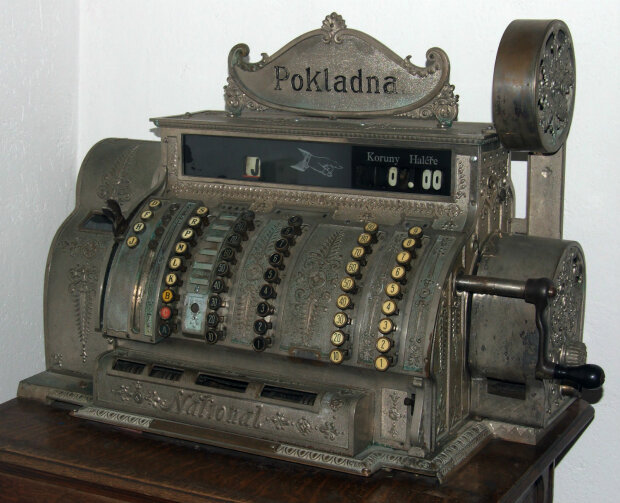
The Industrial Revolution of the XIX century. intensified trade, and at the same time demanded control over trade transactions. Such control was to be simple, reliable, and publicly available.
History of the first cash register
James Ritty is considered to be the inventor of the cash register. This is a businessman who owned the Pony House Bar, located in a crowded place near the train station in Ohio. considered himself a seller of pure whiskey, good wine, and cigars. But Ritty began to notice that the institution had ceased to bring him profit. Ritty suspected his employees of embezzling money but could do nothing. Fearing ruin, James sought solutions to his problems.
In 1878 he sailed to Europe. Walking across the deck, he wandered into the engine room, where he saw a steam meter. It is an arithmometer, invented in the XVII century.
Ritty decided that the principle of this mechanism could be used to create a device that could accurately count the number of money transactions in his bar. He and his brother created and patented such a machine in 1879.
Ritty's incorruptible cashier
The first example of a cash register was primitive. He had a large clock-like dial on which large and small hands showed the amount in dollars and cents. This car provided a special disk to record each purchase.
Subsequently, there was a mechanism for registering transactions on paper tape and a box with money, which opens only in the case of a cash transaction.
Thanks to this device, the owner of the institution could keep accurate records of money and goods. In turn, the staff was now deprived of the opportunity to chat with the money received from the sale.
James Ritti's affairs immediately improved. After all, all proceeds went through the box office. In addition, the Ritty Bar has become a kind of museum, because there was installed an amazing device, which is popularly called "the incorruptible cashier of Ritty."
One hundred years to this day
The Ritty brothers, seeing the success of the cash register, decided to establish its mass production. The production was later sold to Jacob Eckert. And in 1884 the production was bought by John Patterson, which saved him from bankruptcy. Cash registers sold well, and very quickly the National Cash Register Company became known around the world.
Double control
Such popularity of cash registers could not fail to attract the attention of tax collectors, who decided to control the owners of shops. Yes, cash registers were improved so that transactions were recorded on an additional tape - for tax collectors. As such, these devices have survived to the present day.



















